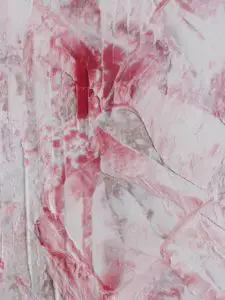This post may contain affiliate links which means I may receive a commission for purchases made through links.

Why does car paint crack? Painting your car makes its bodywork shine and protects the metal surfaces underneath from rust. Unfortunately, car paint can also crack once the top coat has dried, causing it to look unappealing.
Moreover, if ignored, these cracks may develop into an even bigger problem. For that reason, it’s important to fix stress cracks in auto paint or avoid them altogether.
However, to accomplish that, you have to understand what causes auto body paint to crack in the first place. In this article, we’ll look at some factors that might be causing your car paint to crack and the steps you need to take to fix the cracking car paint defect!
Why does car paint crack?
Also known as splitting or wrinkling, car paint cracking can include cracks of various sizes and usually resembles the wrinkles on the skin of reptiles. These cracks can occur due to various reasons such as;
Inadequate surface preparation
The first factor that may cause car paint cracks and other imperfections is insufficient surface preparation. As a result, the paint doesn’t adhere properly to the car’s bodywork, causing it to develop cracks when it dries.
So, make sure you adequately prepare the car’s bodywork and remove any imperfections before you apply a fresh coat of paint.
Auto paint layer thickness
Applying a thick layer of auto paint is another factor that can cause it to crack. Luckily, this issue can be easily avoided by following the instructions provided on the paint’s technical data sheet regarding the drying time between coats and layer thickness.
The time needed for a layer of paint to dry fully is known as flash-off time. Even paint coats must be allowed to dry for a specific duration before the second layer is applied. Unfortunately, some people apply the 2nd coat right away due to presumptions or impatience.
According to recommendations, you should wait about 10 – 30 minutes between each clear coat, but this may vary depending on the type of car paint.
Temperature fluctuations/ Environmental conditions
Changes in temperature, both indoors and outdoors, and exposure to UV rays can cause cracks to develop in the car paint. Similarly, excessive humidity of heat during curing and application can cause surface imperfections like cracking to appear on the car’s bodywork.
Old age
Car paint tends to deteriorate over time, depending on the maintenance and upkeep process. Although some cars may still look good at almost 50 years with their original paint, cracked car paint is inevitable most of the time.
To prevent the paint from cracking, you can either choose to wrap it or invest in a car cover. Also, avoid prolonged parking in cold, wet environments or in direct sunlight. On top of that, drive your car carefully to avoid scratches that can deepen into cracks.
Improper use of hardener/ reducer
Paint hardeners are sometimes used in a certain ratio to reduce the drying time of the auto paint. However, if you use too much hardener, the paint will dry off very quickly, making it vulnerable to unfavorable temperature fluctuations and UV exposure. Consequently, the surface seems dry and gets somewhat cracked.
In addition, not all types of car paints require a hardener. As a result, adding a hardener to such paints will cause the finished dried paint film to crack.
To avoid using the wrong type or too much paint hardener, make sure you check the hardener’s instruction handbook. More importantly, follow the instructions of the paint’s manufacturer on the type of hardeners and reducers to use with each auto paint.
Incorrect paint preparation
Most types of car paint should be mixed with a paint thinner before application. However, if you use too much or too little thinner, the paint will become brittle, causing it to split after application.
To avoid this problem, make sure you mix the paint correctly by adding the right amount of thinner as suggested by the manufacturer in the technical data sheet.
In addition, you should note that not all auto paints require a paint thinner. So, make sure you thoroughly read the thinner and paint user instructions before preparing your car paint.
Also, avoid using old or substandard paint to prevent the paintwork from drying more quickly than usual. On the same note, it’s important to carefully check the expiration date on its container before applying the paint.
What causes classic car paint to crack?
Modern paint systems and solvents used to apply them are designed to maintain a layer of hard, clear lacquer over the base coat. This lacquer can become cloudy over time, but it doesn’t crack like the classic paint on your old Chevy.
One reason for this is that classic car paints were formulated using different chemicals that did not resist UV rays and water as well as modern paint jobs do. Moreover, the paint wash is usually applied thinner than modern paints and then rubbed out by hand before leaving it to dry.
How to fix the cracks in car paint
1. Repaint the entire car
If your car has many significant cracks, the best option is to respray the entire car. However, this process may take some time since you have to sand the car to remove the previous paint completely.
Also, it can take longer if there are other cars on a waiting list that are scheduled to be painted out if the color code you want isn’t readily available.
On the bright side, you can use some simple techniques to fix the cracks in your car paint at home. However, the DIY approach is only recommended when the cracks are not too severe or only affect a few areas of your car.
How to repaint the cracks in your car paint
That said, here are the steps you need to follow to repaint the cracks in your car paint;
- Use masking tape to cover the parts of the car you don’t want to paint including the windshield.
- Wear a face mask while painting the car to avoid long-term exposure to paint fumes as it may expose you to health risks.
- Sand the cracked surface with P1500 sandpaper, then use P3000 sandpaper to remove possible sanding marks and smoothen the surface.
- Once the sanding and the smoothening process are complete, use a microfiber cloth and degreaser to clean the produced dust.
- Polish the car surface with a polishing machine, ensuring even pressure & movement.
- Clean the area again with a clean cloth and a degreaser to evaluate the result obtained.
- If the cracks are still present on the paint finish, prepare the surface to paint the car from scratch. This includes using roughing sandpaper to sand the surface until you completely remove the paint cracking. The ideal sandpaper grit will depend on the severity of the paint cracking. Remember to clean the surface with a degreaser to get rid of the dust residues produced by sanding.
- Apply the filler coat and sand the surface according to the instructions provided by the manufacturer to avoid any subsequent car paint problems.
- Lastly, mix the paint accordingly and apply the finish paint without overloading the surface. In addition, you can wax the newly appointed area with a sponge/ cloth and your preferred car wax. This will help to protect the repainted area from further damage and restore the initial shine.
2. Paint over the existing cracks
To paint over the cracks that are on your car paint, clean the affected area with a clean cloth and soapy water. Use rubbing alcohol to remove the remaining paint completely.
Next, mark the area with the cracks and sand the surface with coarse sandpaper before going on to finer sandpaper. Thoroughly clean the area after the sanding process to remove the produced dust.
Let the sanded area dry completely before applying a layer of primer. Allow the primer to dry according to the product’s direction for usage. Even out the primed surface and prepare it for painting by sanding it with sandpaper.
Make sure you wear a breathing mask and cover the area you don’t intend to paint. Once you have done that, spray the prepared surface with the appropriate car paint, while keeping your hand at least 10” away from the car surface. Let the first paint coat dry completely before you apply another layer.
3. Use a paint pen
A paint pen is a great option if you want a quick solution to repair the cracks in your car paint.
You simply need to find a paint pen that matches the color code of your car paint, clean the affected area with soapy water, let the area dry completely, then cover the crack with a paint pen.
Conclusion:
Cracks in car paint affect the aesthetics of the car, something that may even reduce its resale value. Luckily, as you have seen, these damages are not that difficult to deal with, especially if you’ve got the right tools and know the correct process.
However, the most important thing you need to do is to understand why the car paint has cracks. This will help you avoid these problems in the future and ensure that your car has a brand-new look!

Leave a Reply